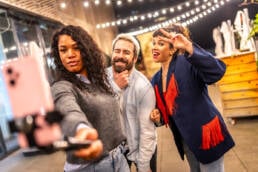Good design is the foundation of any successful brand, campaign, regime, or initiative. In today’s fast-paced, quick-hitting society with a dearth of attention span and a literal bombardment of messaging, images, and advertising, good design is imperative. You have mere seconds to grab someone’s attention and reel them in, or you may lose them forever to the back button.
As marketers, good design is crucial for us to do our jobs. Your visual identity, look and feel of your websites, catchy subject lines on emails, and campaign graphics need to be power-loaded to pop and engage.
Several adages come to mind:
Read the room • Know your audience • Meet people where they’re at
While potentially sounding cliché, these statements are tried and true and pertain to good design every bit as much as your intentions, objectives, and goals. It’s imperative to know your audiences and define your quantifiable objectives upfront, and if you can reasonably articulate those, phenomenal design can ensue.
That’s why Bright Brothers Strategy Group always starts strategic planning (of ANY kind!) with a “people-first” approach. When we ask new clients “who is this for?” and they reply “Everybody! We want everybody to come downtown!”, that’s a flat, hollow, and meaningless answer. It’s not true, and it’s not actionable or targeted.
When you say you want everyone downtown, you don’t actually mean that. You have neither the time, money, nor resources to get everyone downtown, and frankly, you don’t want that. It’s not being exclusionary — it’s about creating experiences that resonate with your target constituents and developing loyalty and repeat business from the precise people you wish to connect with.
There is no more mass marketing! While the 20th century was the heyday of Madison Avenue, Mad Men, and mass marketing, even the simplest of tools and technologies today can provide us insights to define, identify, segment, and customize our marketing and communications to the very precise individuals and communities we aim to connect with.
In this Trends Report, we endeavor to share some thought leadership, engaging tools, and technologies to assist your design team, and we explore trending issues and aspects of design that every downtown district and DMO can incorporate into their output. Let’s take a look at how AI can aid us in our daily work.
It’s important to note that the topic of Artificial Intelligence (AI) has been a subject of interest for quite some time, but there has been a significant increase in attention since the release of visual/design AIs in November 2022. According to Google Trends data, there has been a relatively flat line in search volume for AI from 2004 until the present day, with some slight upticks in the past two years. However, the conversation exploded last November.
Despite the growing interest in AI, there are also concerns about its potential risks and impact on society. In late March 2023, over 1,100 leaders and experts in the field, including figures like Steve Wozniak, Bill Gates, and Elon Musk, signed an open letter calling for a six-month moratorium on the training of AI systems more powerful than GPT-4. The letter emphasizes the need for humanity to catch up and fully understand the potential impacts of AI before it’s too late. Whether or not this call for caution will be heeded remains to be seen, but it’s clear that those who are knowledgeable about AI are taking its potential risks seriously.
Furthermore, the brain trust requesting the six-month moratorium on development has very specific and real concerns around how quickly unchecked AIs are being deployed, learning and evolving.
“Contemporary AI systems are now becoming human-competitive at general tasks, and we must ask ourselves: Should we let machines flood our information channels with propaganda and untruth? Should we automate away all the jobs, including the fulfilling ones? Should we develop nonhuman minds that might eventually outnumber, outsmart, obsolete and replace us? Should we risk loss of control of our civilization? Such decisions must not be delegated to unelected tech leaders. Powerful AI systems should be developed only once we are confident that their effects will be positive and their risks will be manageable.”
The letter goes on to call out a lack of “planning and management” that can easily lead to scenarios in which “…ever more powerful digital minds that no one – not even their creators – can understand, predict, or reliably control.” Scary stuff!
The thousand plus experts, luminaries and AI developers who signed the letter are asking that if the industry itself will not voluntarily pause to allow humanity time to catch up and self-regulate, then, “… governments should step in and institute a moratorium,” indicating the seriousness with which we need to act as a society.
What happens next remains to be seen, even as our feeds are filling up quickly with daily tales of deepfake political imagery, pornography and even a fake Drake X The Weekend clone drop.
Tech Tools
Regardless of which way the pendulum swings with regard to AI, the fact remains that there are dozens upon dozens of AIs out there, and increasingly creatives are turning to them to simplify manual work, do the heavy lifting of manual research for you, and to provide inspiration.
And this is especially true for creatives and those of us in the worlds of MarCom and design. While automation, and facile tools designed to simplify our lives, replace the rote and routine with automated ability to act as live chat assistants, various types of bots performing highly boring and repetitive tasks, and the ability to time, pace and nurture potential customers and constituents (like email drip campaigns) — very rapidly, the proverbial genie is now out of the bottle.
And while these tools can offer an amazing level of assistance with tasks, content development and visual arts — they’re all still in their infancy, and all require something that artificial intelligence still grapples with; nuance.
Clearly, there are plenty of people who grapple with nuance as well, but the point being — any tool you employ still requires a human touch. And with the human brain being one of the most advanced computational tools on the planet, it will most likely be a while before AI is raining down Armageddon on us — or allowing a bot to write our website copy, develop our branding and visual identity or acting as autonomous replacements for human interaction.
They can however, shave off hours from our tasks and assist with routine, mundane or labor-intensive tasks. But they don’t preclude human attention to detail, subtlety or nuance. So let’s learn about some of the tools we think you’ll love.
AI
It’s Tuesday afternoon and you’re a caffeinated, hydrated, and focused marketing machine…one that’s also staring into the abyss of a blank document. Despite all your Pinterest mood boards and creative meetings, you’re struck with the actualized fear that your “inspiration well” has run dry and the anxiety is setting in. Step one, take a deep breath, you’ve done a hundred campaigns like this before; rest assured you’ll make this one equally special. Step two, tap AI for inspiration and assistance.
From food vloggers to fashionistas, travel influencers to fitness gurus, AI is using language process capabilities to populate content across platforms including social media, blogs, Google ads, and beyond. The most popular (and free) option is currently ChatGPT. Or perhaps you are one of the many who received a trial of BARD, an experiment in AI by Google. Although these are just a few examples, there are numerous others already available or currently in development.
Tom Petty may have sung that, “waiting is the hardest part,” but IMO, this difficulty is surpassed only by getting started. Need to brainstorm a name for Food Truck Festival? Need to build a compelling case for the benefits of public murals? Do you need to write a blog about current trends in bus stops, or the post-pandemic evolution of street-side dining? ChatGPT may not draft the most prophetic prose, but it will help you to hit the ground running. While many creative and strategic marketing practitioners agree that AI can save you valuable time and reduce mundane research, a human touch is still needed to develop a meaningful and authentic connection between the message and the reader. In short, our jobs are still safe because AI copy isn’t going to be clever or nuanced, at least not yet.
In just seconds these generators pull from a vast amount of knowledge and information including scientific research, social media posts, and news articles. The downside, it’s an emerging technology that is still learning, is very much a work in progress, and is not always accurate. AI is limited to the quality and quantity of data is has been trained on. Sometimes the information provided may result in generated responses that are nonsensical, incorrect or biased.
Want to know more about the benefits of AI and how it can support your creative and strategic marketing needs? This article by HubSpot dives deeper into how AI works for copywriting and so much more — like how it can provide data-driven insights, kindle conversions, find best-fit customers, and sort data for brand monitoring.
It is said that the only true luxury is time. AI is, if nothing else, a time saver. We recommended exploring AI tools to better utilize your marketing resources so that you can spend less minutes Googling references and finding a jumping off point, and more time making an impact and creating meaningful connections with your constituents.
Influencer Marketing
Seems like everyone is an influencer these days. But how do you know who’s worth the collab and who’s all smoke? Influencer marketing, in-kind or otherwise, requires time for vetting. Collbastr is a tool that has no upfront cost and allows you to search influencers for free based on social platform and keywords, niches, or categories. Search “TikTok” and “travel”, and results return with foodies, beauty bloggers, travel enthusiasts, wellness coaches and more. Narrow your findings by location and set your price to reveal a directory of content creators that align with your message, budget and objectives. Instantly chat with these individuals and stay in touch throughout the transaction. Rest easy knowing that your money is held safely by Collabstr until you’ve approved of the influencers work.
Collabstr also offers tools like a Free Influencer Campaign Template that is cloud hosted and can be shared via your own unique link. Create campaigns with scale by centralizing your images, requirements, and content examples that update in real time. Generate Free Influencer Contracts with a customizable template to ensure that scope of work, description of service, deliverables, milestones and payments are clearly defined up front.
Collabstr even has a feature to simply buy social media content from influencers using the same trusted vetting and search options.
You’ve got no time, and no budget to waste. Don’t spend it fooling around with fakes and content creators that claim results and don’t deliver.
User Generated Content
Ah, the simpler times. In January 1996, ER was the No. 1 TV series, ’90s power couple Brad Pitt and Gwyneth Paltrow graced the cover of PEOPLE magazine, and Mariah Carey and Boyz II Men teamed up to dominate the charts with “One Sweet Day”.
That same year, Bill Gates published an essay entitled “Content is King”. In it he describes the internet as we know it today, robust with “games, entertainment, sports programming, directories, classified advertising, and on-line communities devoted to major interests.” He concludes with “Those who succeed will propel the Internet forward as a marketplace of ideas, experiences, and products — a marketplace of content.”
What Mr. Gates failed to describe is the endless mountain of clever and engaging content, that you as a marketer, are responsible for (in some way), creating, curating, organizing, and deploying on the daily. Thankfully, you’re a resourceful strategist and know that User Generated Content (UGC) is a sure-fire way to fill the funnel with original, authentic, crowd-sourced, brand-supportive content that you don’t have to create yourself.
Enter, CrowdRiff, a visual storytelling solution and UGC curation tool for destination marketers. Imagine being able to search high-quality relevant photos and video, created by locals and visitors in your area, filtered by hashtags, keywords, and location.
Even better, included is a simple-to-use dashboard and messaging platform that allows you to request, acquire and manage permissions to use this content in everything from social media to newsletters and ad campaigns.
But wait, there’s more! Among the public engagement features we like most, CrowdRiff gives you the capability to host #hashtag content contests and to create high-engagement web galleries filled with images targeting your Personas’ interests. And you know how we love data-driven decisions! CrowdRiff has processed more travel and hospitality visuals than any other UGC platform, and uses artificial intelligence to surface the visuals that work best for your brand.
Engage with your audience. Curate their best content. Connect it with your message. Rinse and repeat.
What do we hate?! Boring email marketing.
What do we want?! Really good emails.
How do we do it?! Copy what the best brands are doing.
If imitation is the sincerest form of flattery, then these brands must be thrilled to be featured on ReallyGoodEmails (RGE for short), is a showcase of the best email design and resources on the web. Search of 10,000+ handpicked communications by keyword or category to discover email marketing inspo specific to your need. Use it for finding language, best practice methods for presenting organized information, and visual inspo that other brands have used to communicate concepts like your own. For instance, let’s say you need to promote a series of workshops. Search results will yield a valuable gallery of ideas to make your own including layouts, creative call to action copy, and ways to present details you may have not otherwise considered.
Are you familiar with the big names that target your Personas? Searching by brand name allows you to tap into the marketing trends that companies like Tripadvisor, Nike, Allbirds, and BlueApron have spent millions to develop. Create a user profile, and make use of the Your Emails section in the navigation to create and save collections of email for future ideas in your own library.
Expect nothing less than excellence when you subscribe to the RGE email newsletter. We read it for the ideas we haven’t thought of yet, quick-read tips on email marketing trends that make us look smart as hell, and frankly the snarky bit at the end is always worth a chuckle.
Closing Thoughts
While trends come and go, serious marketers and place managers are always on the lookout for proven and reliable tactics, techniques and technologies to support their communities. In this Trends Report we’ve offered you a balanced overview of Artificial Intelligence for MarCom and creatives, and included some of our favorite, time-saving tech to help you do your job better, faster and more efficiently than before!
As leaders in the development of strategic initiatives within the place management, urban planning and destination marketing verticals, Bright Brothers Strategy Group excels thanks to our “people-first, data-driven” approaches, deep industry experience, and our proven POSTR process, that starts with people and custom-developed Personas.
We’re happy to develop specialized strategies and solutions for your district, provide educational sessions for your stakeholders, help you develop KPIs and metrics for quantifying the economic impact of your district’s work — or just be that consultative 3rd party looking out for your best interests.










